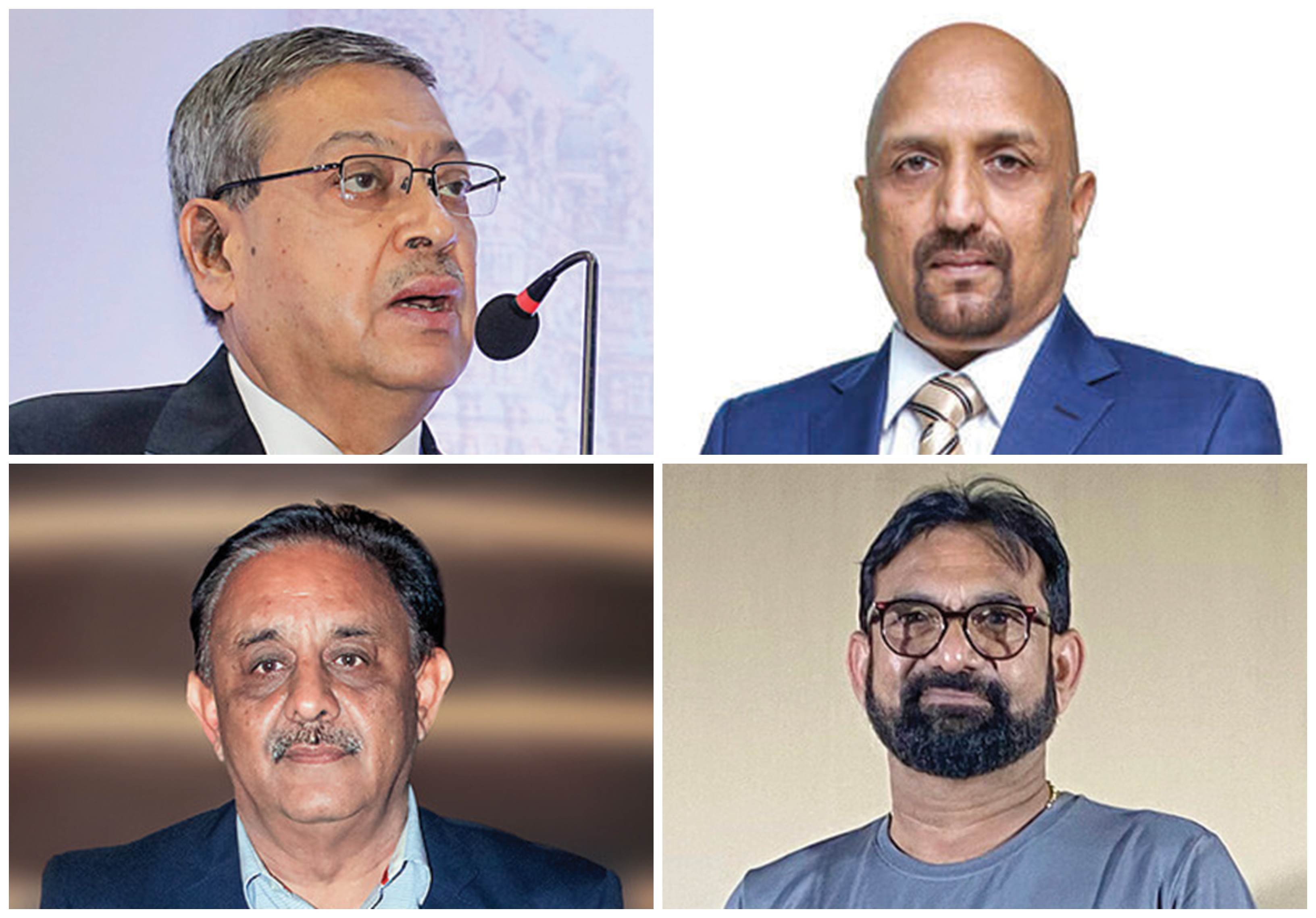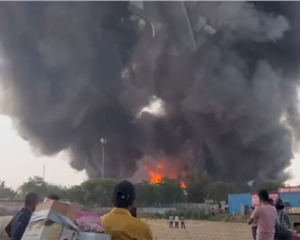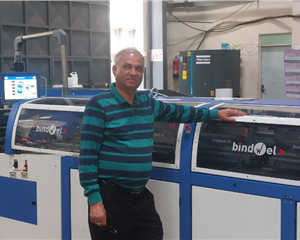FPTA: Paper market likely to improve after August
The situation may be painful for Indian paper manufacturers in the short-term, the outlook is bullish in the medium and long-term, says Deepak Mittal, president, FPTA
29 Jul 2021 | By PrintWeek Team
Giving a presentation on the short and medium-term market condition of the Indian paper industry during the third managing committee meeting of the Federation of Paper Traders’ Association of India (FPTA), Deepak Mittal, president, FPTA, says that while the Indian paper industry went through a rough patch during the pandemic, the market situation is set to improve after August 2021, notwithstanding the expected third wave.
“The second lockdown lingered on longer than anticipated, and with schools and colleges shut, the writing and printing paper sector was the worst-affected, as it contributes to 60% of the share in the segment,” Mittal says.
During the period, the prices stabilised between the range of Rs 50 and Rs 55/kg. During the first lockdown, the price went down as low as Rs 43-46/kg. The inventory level during the first lockdown was low, but was high this time around, especially with the traders.
Mittal adds that in the last two months, pulp prices have corrected by USD 50 and the price for international coated paper came down to USD 130-140/tonne; approximately Rs 10/kg.
Recently, Indonesia paper manufacturers, APP and April, offered an uncoated route free to the Indian market at USD 700/tonne in reel and USD 730/tonne in sheet. But the allocation was very small. APP had just 1,300 tonne. Mittal says the manufacturers turned to India because there was severe port congestion in the US and the UK. As APP is one of the world’s biggest manufacturers of pulp, it did not want to reduce pulp prices, so it went ahead and dropped paper prices.

The pulp prices haven’t gone down below USD 750
However, Mittal remains optimistic. “I feel the demand will pick up once the lockdown eases. Things should get better from August, notwithstanding the third wave. The same is expected internationally,” he says, adding,
“Internationally, in the last one year, prices from the bottom moved up 60%. So, it will go through a correction of 5-10% or it will need some time-correction.”
However, rise in the raw material cost remains a concern. The pulp prices haven’t gone down below USD 750. And uncoated wood-free is offered at USD 700-730. Mittal says, it is a funny situation where pulp is more
expensive than the finished product. He argues that the situation won’t last — either the pulp prices will come down or paper prices will go up. “As of now, we believe paper prices will get corrected upwards,” he adds.
Mittal says the situation may be painful for Indian paper manufacturers in the short-term, the outlook is bullish in the medium and long-term.
For example, the writing and printing segment shrunk 35% against the normal growth of 5% last year. Thus, the country was 40% below its potential. Globally, the number was -16%, against the normal degrowth of 5%.
Thus, India underperformed by a big margin and the expectation is that it will come back strong this year and the next. “The country’s per capita consumption of paper is less than 4-kg. I doubt we can go any lower than this. So, the only way is up,” Mittal says.
On the positive side, state textbook tenders are being released. Maharashtra recently released a tender for textbooks, while Karnataka has announced that it will release an 18,000-tonne textbook tender soon. This should help increase demand.

Last year, the writing and printing segment shrunk 35% against the normal growth of 5%
Mittal says with the demand, prices are also likely to go up from August, in the range of Rs 60-66/kg. “The rule of thumb for pricing uncoated writing and printing paper is the pulp price plus Rs 10. Thus, given the pulp cost at USD 730/tonne, the price should hover around Rs 66/kg,” he says. “It is unlikely that pulp prices will come down until March next year. This is because waste paper prices are still high, as well as the shipping cost.”
There has been no new capacity addition in the industry, and Mittal believes the time for paper will come by the end of the year when demand matches the supply. “If the third wave subsides by the end of summer 2021, I wouldn’t be surprised if the quota regime comes back to the Indian market in 2022,” he says.
There are strong reasons to support this. Today, the gap between coated and uncoated paper is almost Rs 20/kg, with uncoated at Rs 53/kg and coated at Rs 70-72/kg. Usually, the cost of coated paper is lower than uncoated paper. So, the gap wouldn’t last, and once the demand increases, the gap will shrink.
Secondly, there will be a renewed demand for copier paper as schools and colleges reopen. “I believe, once education institutes open, there will not be enough textbooks and there will be a mad scramble for copier paper to photocopy textbooks,” he says.
Indian paper industry remains optimistic

(clock-wise) Anil Kumar, R N Agarwal, Shankar Patel and Sanjay Singh
At present, the Indian paper industry has been struggling with the shortage in the supply of one of the major raw materials for the paper mills in the country — the waste paper from the US and Europe. Further, as a major setback and dampener for the printing and packaging industry is the continually rising prices of kraft paper, which in turn is due to the rising prices of waste paper.
Sanjay Singh, group head, paper and packaging, ITC, says, “In effect, the packaging board prices will continue to remain high in the next two quarters of FY 2020-21.”
The global shortage of shipping containers has also resulted to a drastic inflation in shipping and container prices and has increased delay times for a number of industries. This has impacted the price of sea freight, which has increased almost threefold.
RN Agarwal, chairman and managing director, NR Agarwal Industries, asserts that, “the issue of price rise has been aggravated with the non-availability of shipping containers which has largely hindered the imports of Kraft paper and other kinds of packaging paper by China.”
To sum up, while the second wave of the pandemic is a grave concern at this time, the paper industry is trying to remain optimistic and is looking towards the government to put in place the building blocks needed to push the growth of the Indian paper industry.
Sanjay says, “In essence, we need to innovate and find innovative solutions. Although it is going to be challenging at first, there will be a plethora of opportunities in the area. This is also the need of the hour for the industry to cut costs which do not add value to our customer.”
Overall, the price of duplex packaging boards has remained steady over the past five years till 2020 (in pre-Covid times). Also, the minor shifts in price have been driven by some of the globally applicable factors such as, the significant variations in the overall demand and supply of waste paper and export. As a matter of fact, the price of waste paper significantly impacts the overall cost of the finished paper because it constitutes more than 50-60% of the total cost.
The average price trends of the duplex board of different qualities/grades during the years – 2019, 2020 and 2021 can be summed up as, Rs 34,000-35,000/tonne; Rs 34,000- 36,000/tonne and Rs 39,000-Rs 43,000/tonne respectively. All things considered, it can be said that after April 2021, the prices of the duplex board range are projected to go up further depending upon the input costs.
RN Agarwal, chairman and managing director, NR Agarwal Industries, says, “With respect to the duplex boards in the packaging segment, it seems that in the next two quarters, this segment is projected to have significant and increased opportunities owing to an increased demand in sectors, such as the pharma, FMCG and other related industries.”
Anil Kumar, CEO and executive director, Shreyans Industries, says, “The future of the writing and printing paper in the short to medium-run is quite encouraging as the government has already announced the implementation of the New Education Policy (NEP). This would require an escalation in the printing and publishing of textbooks with the newly-implemented syllabus and other related activities.”
A lot has been said regarding the recent and sudden increase in the prices of the writing and printing paper products. However, according to Kumar, a rational analysis would clearly show that this price rise was not exceptional nor was unjustified. If we look into the prices of the writing and printing paper in the last couple of years, this will seem to be amply borne out of a number of market-related factors.
In 2019, the prices of paper varied between Rs 51,000-58,000/MT (base grammage of 56-gsm). This range was due to the seasonal nature of demand. In 2020, the pre-lockdown prices were about Rs 54,000/MT, which started coming down from the month of May 2020 after the mills restarted post-lockdown in March-April, 2020. There was a continuous slide in the prices of paper products and these prices even touched a low of Rs 37,000/MT during November-December 2020.
This year, the prices of paper products started going up and the price-rise was quite sharp and rapid. Thus, within a period of around one month, the prices went up from a low range of Rs 37,000/MT to quite high range of Rs 63,000-65,000/MT, which resulted in a sharp outcry from the user-end. However, if we look at this issue rationally, the price range reached in the current year was only 7-8% higher than the corresponding price range of 2019. Further, the increase in prices was quite expected keeping in view the recent inflation in the system.
“Overall, the Indian paper industry is looking forward to a much better performance in the current year as compared to the last year, but at the same time, we are keeping our fingers crossed as the Covid- situation still remains quite fluid and at peak,” Kumar adds.
Shankar Patel, managing director, Sukraft Group, adds, “As the availability of containers are getting eased day by day, I see a slight downtrend taking place in the raw material prices. However, at this point, we have to observe the collections and output from the western countries since this factor is going to play a key role in the domestic market conditions.”
(Extracts republished with permission from Paper Mart)














 See All
See All